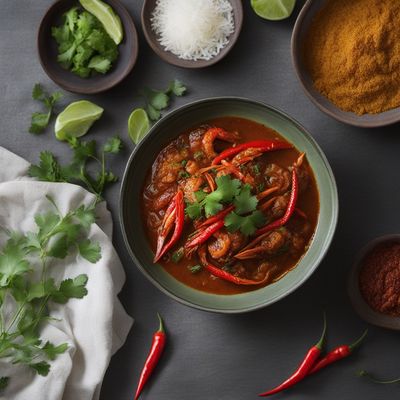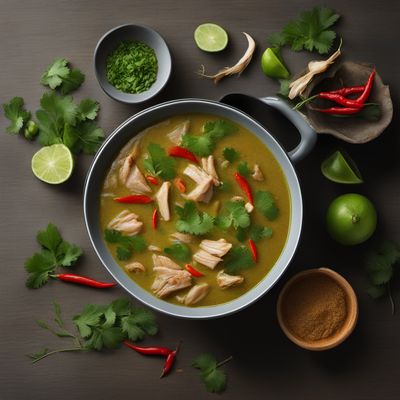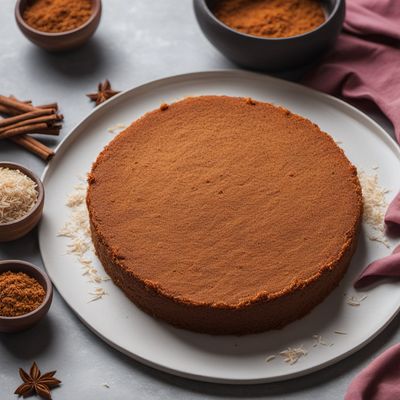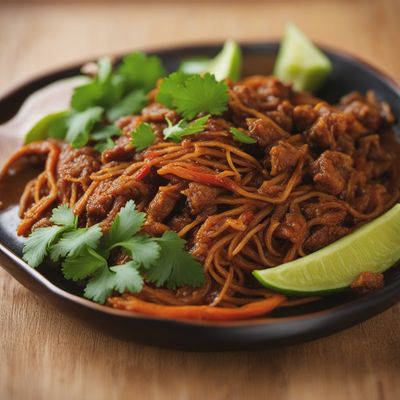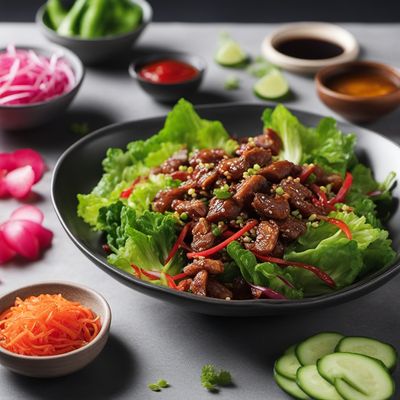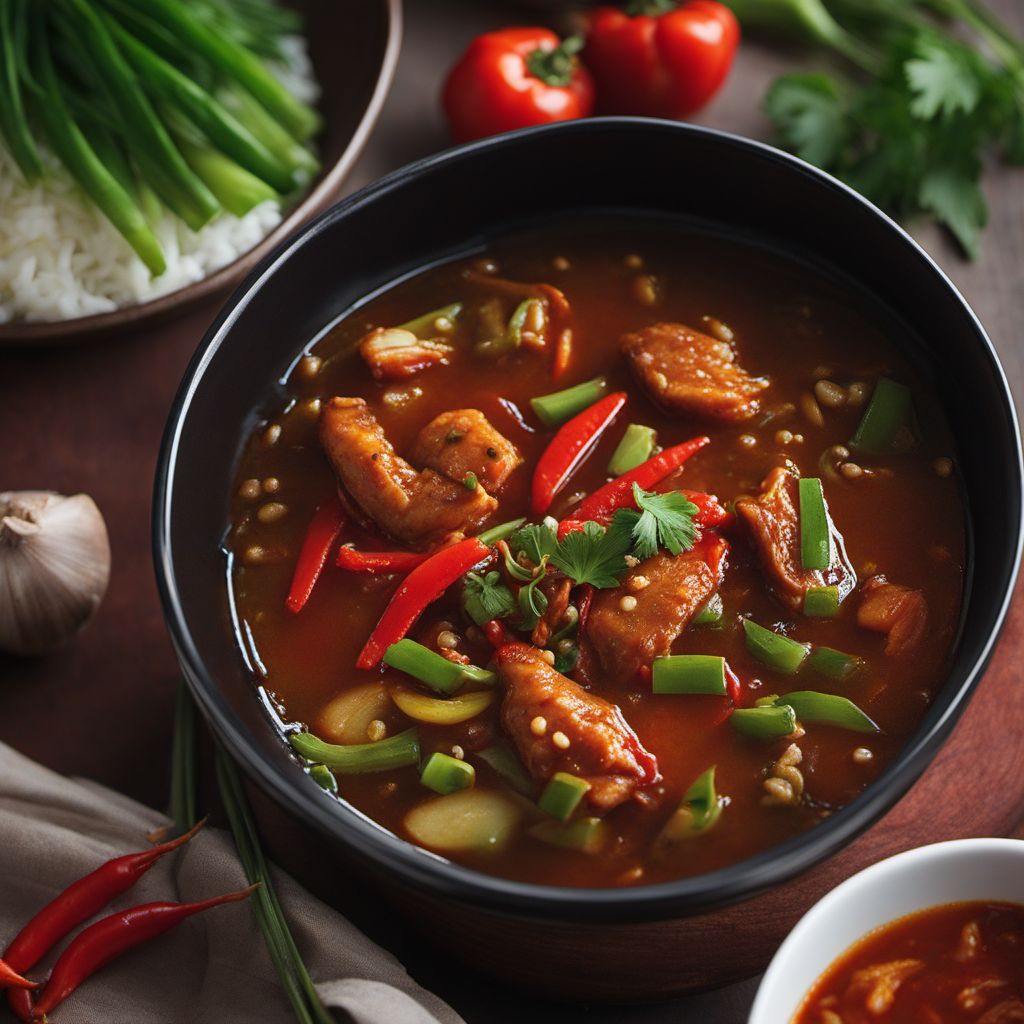
Recipe
Korean Chinese-style Spicy and Sour Stew
Fiery Tangy Jjambbong: A Korean Chinese Twist on Spicy and Sour Stew
4.7 out of 5
This recipe brings together the bold flavors of Korean Chinese cuisine with the tangy and spicy elements of the original Malay dish, Asam Pedas. The result is a mouthwatering Korean Chinese-style Spicy and Sour Stew that will tantalize your taste buds.
Metadata
Preparation time
20 minutes
Cooking time
20 minutes
Total time
40 minutes
Yields
4 servings
Preparation difficulty
Medium
Suitable for
Pescatarian, Gluten-free, Dairy-free, Low carb, High protein
Allergens
Shellfish, Sesame
Not suitable for
Vegan, Vegetarian, Nut-free, Egg-free, Soy-free
Ingredients
In this Korean Chinese adaptation of Asam Pedas, we incorporate Korean Chinese spices and ingredients to create a unique flavor profile. The original Malay dish typically uses tamarind, lemongrass, and galangal for its tangy and aromatic base, while the Korean Chinese version relies on a combination of gochujang (Korean chili paste), soy sauce, and Chinese spices for its distinct flavor. Additionally, the Korean Chinese-style Spicy and Sour Stew includes a wider variety of seafood such as shrimp, squid, and clams, which are commonly found in Korean Chinese cuisine. We alse have the original recipe for Asam pedas, so you can check it out.
-
500g (1.1 lb) mixed seafood (shrimp, squid, clams) 500g (1.1 lb) mixed seafood (shrimp, squid, clams)
-
2 tablespoons vegetable oil 2 tablespoons vegetable oil
-
1 onion, thinly sliced 1 onion, thinly sliced
-
2 cloves garlic, minced 2 cloves garlic, minced
-
1 tablespoon gochujang (Korean chili paste) 1 tablespoon gochujang (Korean chili paste)
-
1 tablespoon soy sauce 1 tablespoon soy sauce
-
1 teaspoon sugar 1 teaspoon sugar
-
1 teaspoon sesame oil 1 teaspoon sesame oil
-
1 carrot, julienned 1 carrot, julienned
-
1 zucchini, julienned 1 zucchini, julienned
-
1 red bell pepper, thinly sliced 1 red bell pepper, thinly sliced
-
4 cups (950ml) chicken or seafood broth 4 cups (950ml) chicken or seafood broth
-
2 green onions, chopped 2 green onions, chopped
-
Salt and pepper to taste Salt and pepper to taste
Nutrition
- Calories (kcal / KJ): 320 kcal / 1340 KJ
- Fat (total, saturated): 12g, 2g
- Carbohydrates (total, sugars): 20g, 8g
- Protein: 30g
- Fiber: 4g
- Salt: 2g
Preparation
-
1.Heat the vegetable oil in a large pot over medium heat. Add the sliced onion and minced garlic, and sauté until fragrant.
-
2.Add the gochujang, soy sauce, sugar, and sesame oil to the pot. Stir well to combine the ingredients and cook for 1-2 minutes.
-
3.Add the julienned carrot, zucchini, and sliced red bell pepper to the pot. Stir-fry the vegetables for 2-3 minutes until slightly softened.
-
4.Pour in the chicken or seafood broth and bring the mixture to a boil. Reduce the heat to low and simmer for 10 minutes to allow the flavors to meld together.
-
5.Add the mixed seafood to the pot and cook for an additional 5 minutes or until the seafood is cooked through.
-
6.Season with salt and pepper to taste. Garnish with chopped green onions.
-
7.Serve the Korean Chinese-style Spicy and Sour Stew hot with steamed rice.
Treat your ingredients with care...
- Seafood — Ensure that the seafood is fresh and properly cleaned before adding it to the stew.
- Gochujang — Adjust the amount of gochujang according to your spice preference. Add more for a spicier stew or reduce the amount for a milder flavor.
- Chicken or seafood broth — Use homemade broth or low-sodium store-bought broth to control the saltiness of the stew.
- Vegetables — Feel free to add or substitute other vegetables such as mushrooms or cabbage to suit your taste.
Tips & Tricks
- For a spicier stew, add a small amount of Korean chili flakes (gochugaru) along with the gochujang.
- If you prefer a thicker stew, mix 1 tablespoon of cornstarch with 2 tablespoons of water and add it to the stew during the last few minutes of cooking.
- Serve the stew with a side of kimchi and pickled radishes for an authentic Korean Chinese dining experience.
- Adjust the amount of vegetables according to your preference. You can add more or less depending on your taste.
- Leftovers can be stored in the refrigerator for up to 2 days. The flavors will continue to develop, making it even more delicious the next day.
Serving advice
Serve the Korean Chinese-style Spicy and Sour Stew hot in individual bowls. Garnish with chopped green onions for added freshness and color. Accompany the stew with steamed rice to balance the spiciness and enhance the overall dining experience.
Presentation advice
To enhance the presentation, arrange the seafood and vegetables on top of the stew before serving. This will create an appealing visual contrast and showcase the variety of ingredients in the dish. Serve the stew in traditional Korean bowls for an authentic touch.
More recipes...
More Malay cuisine dishes

Asam pedas
Asam Pedas
Asam pedas is a spicy and sour fish stew that is popular in Malaysia and Indonesia. The dish is made with fish, tamarind, chili peppers, and other spices.
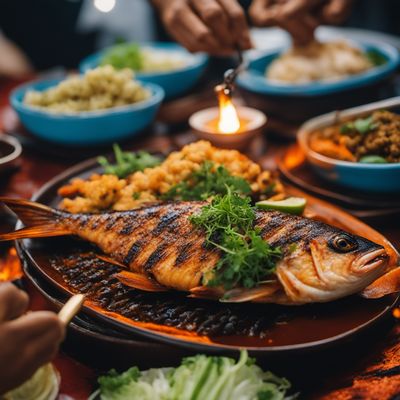
Ikan bakar
Grilled Fish
Ikan bakar is a popular Indonesian dish that translates to "grilled fish" in English. It is a simple yet flavorful dish that is perfect for seafood lovers.
